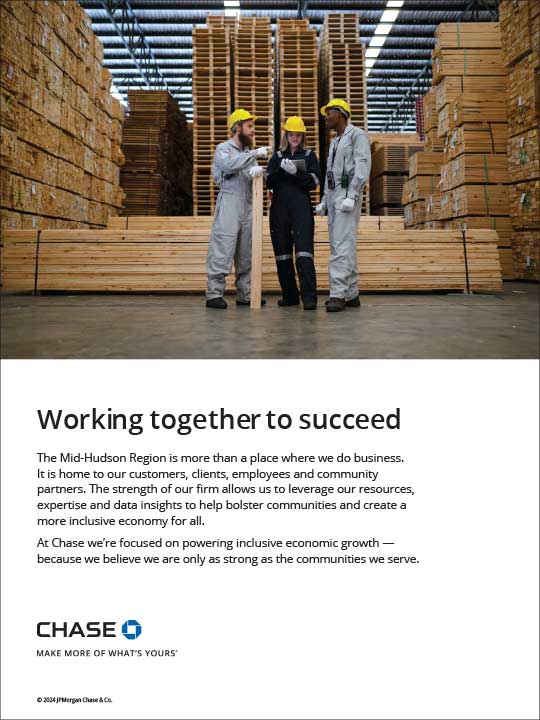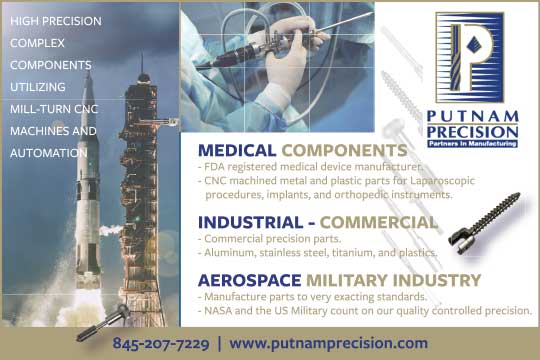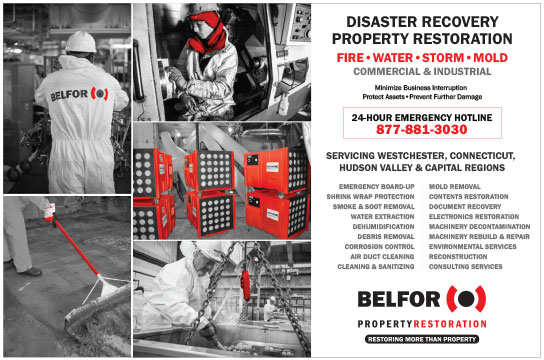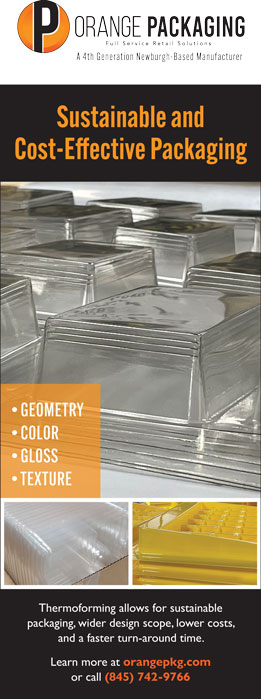PRECISION IN LEADERSHIP
from a WORLD CLASS contract manufacturer
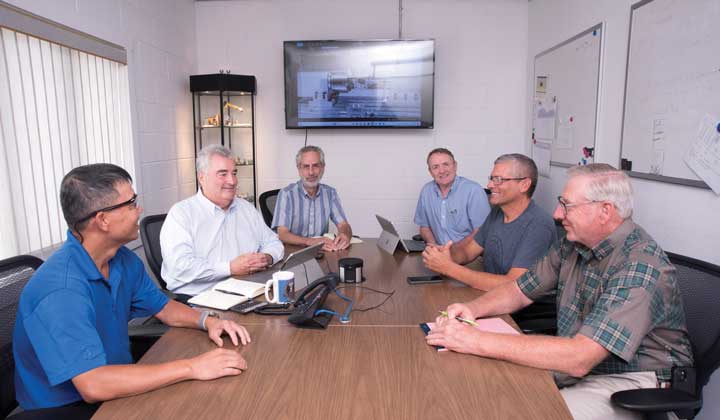
Putnam Precision works within the medical, aerospace and commercial industries producing complex parts on 200 CNC machining centers requiring a high degree of collaboration. Senior team meetings are an integral part of our OpEx strategy. Van Nguyen, Turning Manager, Sean Hamilton, Director of Operations, Steve Granato, Director of Quality Assurance, Francis Devaney, Plant Manager, Rich Winterleitner, Tool Maker, Fred Dibble, Milling Manager.
HV Mfg sat down with Sean Hamilton, Director of Operations for Putnam Precision Products, Inc. in Brewster to talk all things manufacturing. Sean shares his journey from his high school industrial arts program to Engineering school, how he got started in the sector, the evolution of machining and what it takes to lead a company that is a world leading precision contract manufacturer. Sean also shares how his strong commitment to workforce development has influenced his work leading Putnam Precision.
HV Mfg: Thank you for taking the time to share your story. Tell us a little bit about Putnam Precision.
SH: Putnam Precision started in 1967 as a leading provider of high-precision manufacturing solutions. We specialize in custom machining a wide range of precision components and assemblies for the medical, defense, aerospace, and telecommunications industries.
HV Mfg: When did you join the company, and how has it evolved since then?
SH: I joined in 1978, Putnam at that time was producing many precision machined components for IBM, GE, aerospace, military, and the medical industries. For many of us, it was a great incubator for the future organization. Collaborating with these leading firms on new designs, matriculating an R&D project into scalable production has always been a core strength of our team at Putnam. We provide nimble flexible solutions in all phases of a products life, from the initial concept, launch, to full scalable production.
Throughout our history, Putnam continues to invest in a broad range of manufacturing processes. We have many successful collaborations with our customers that have broken new ground both within manufacturing process and generational leaps in new products. From computing advances, aerospace components, evolving traditional surgical procedures into the minimally invasive devices to modern robotic surgery, we continue to deliver manufacturing solutions to match the latest designs that change our lives.
Putnam has evolved over its past 57 years from a job shop to a large-scale contract manufacturer. Our team has grown to three hundred employees, over 200 CNC machining systems utilizing the latest in automation and robotic cells. Having many leading technology firms as clients has provided many of us the opportunity to gain experience and continue mentoring the folks entering our industry.
HV Mfg: That’s impressive growth. What drove that transformation?
SH: We have benefitted from the many leaps in technologies through the years. In my time, early Putnam was a traditional manufacturing firm. Many of the machines in that era would be recognizable to the earlier generations. The breakthrough occurred at the inception of what later would become the Computer Numerically Controlled (CNC) machining industry. In a few short years we went from ‘tape’ to fully capable CNC machines. This allowed more complex parts to be produced in a far shorter time than the previous generation of machining. Fast forward through the next 40 years, parts are now being produced complete in many of these machining cells. The degree of precision and complexity has gone through several generational changes.
The drive behind this continuing transformation was the confluences of strong organizational backing, leadership, and our core values at Putnam. We have been strongly led and financially supported throughout all our growth opportunities to enter new market segments. We identify the synergies of the emerging manufacturing advances within our customers new design requirements. We have developed the relationships, partnerships within our own ecosystem to facilitate flexible solutions to scalable production and inventory controls opportunities.

Trang Doan is running an 11 axis Swiss machining center. These machines produce complex components with high degree of precision for the aerospace, medical and commercial industries.
HV Mfg: How did you manage such rapid scaling?
SH: A big part of our success has been our involvement with the entire manufacturing ecosystem. It starts with a competent workforce. Putnam has a strong commitment to integrating new employees to join our team. It has been a strength of our team to train our workforce to facilitate the production requirements of our clients. In addition to earning a strong reputation for delivering innovation, quality, precision on time assemblies and components to our customers, we have equally developed and fostered long term relationships within our supply chain. And, continue to push best practices within our supply chain.
HV Mfg: How would you describe the culture at Putnam Precision? What is the mindset that is driven the company’s success?
SH: Throughout these transformations we have relied on our core team to drive these solutions. Our culture is all about fostering an entrepreneurial spirit across the board. We encourage innovation and adaptability, always looking for ways to push the boundaries of what is possible in manufacturing. Investing in cutting-edge technology has been a big part of that—it helps us stay ahead of the curve and deliver real value to our customers. That focus on innovation and continuous improvement is what keeps us competitive and thriving.
HV Mfg: How did you come to lead this organization, what is your background?
SH: I was fortunate, our high school had an Industrial Arts program. It was state-of-the-art, much like what you would see today at the Gene F. Haas Center for Advanced Manufacturing Skills at Hudson Valley Community College. We had access to mills, lathes, welders, castings, and all kinds of equipment. I learned to machine metal, work with wood, castings, and so much more. I enjoyed this work immensely. I literally thought it was industrial arts and nothing more.
During graduation awards, I was chatting with Brenda, who would later become my wife, when they called my name for an award. I had no idea what I had done to deserve it, but it turned out I had been recognized for my work in Industrial Arts. It was an honor being recognized for something you truly enjoyed doing. Later that year I was working in construction, and I met a friend who worked at Putnam. He told me, “It’s just like high school—we make things.” I was shocked he got paid to do what we loved doing in class. I joined Putnam shortly after, and they offered me an apprenticeship. This was before CNC and even NC machines—back then, we had tape machines, and I was learning the trade hands-on.
After two years, the owner approached me and said, “Why don’t you go to college? I will pay for it. All I ask is that for every year you are in school, you give me a year of work.” It was clear to me that having a degree was important to my future. I worked full-time, went back to school for engineering. I graduated with honors from Fairfield University with BSME. From there I continued to move up through the organization as it continued to expand.
At the end of the day, it is about providing opportunities for people in an environment where they can learn and grow. The opportunities always outweigh the challenges.
HV Mfg: How did you manage engineering school, a new family, and full-time work?
SH: It was tough, but I enjoyed the challenge. The academic side was rigorous, and I liked that, but managing my time was the real hurdle. I would spend Sunday afternoons in the basement, working on assignments until midnight, then head to work on Monday morning. I would do this all week, sometimes having a Friday lab, and then it was back to work. It was a constant cycle of school and work.
HV Mfg: Who inspired you along the way?
SH: I am constantly inspired by our team—both the newer employees who bring fresh perspectives and friends I have worked with for over 25 years. But if I had to highlight one person from my early years, it would be Gunner Palm, the original owner of Putnam Precision. He treated me like a son and became my first real mentor. I looked up to him because he was a machinist himself and never hesitated to share his knowledge. He let us run with ideas, and if we got stuck, his advice was always, “What would you do if this was your place?” That is a piece of advice I have never forgotten, and it is a philosophy we still use to mentor others today.
My parents were also a big influence. They were Irish immigrants, and I was born just three years after they arrived. Growing up, we did not call anyone to fix things—we did it ourselves. Whether it was the furnace breaking down or something wrong with the car, we would figure it out from scratch. My dad always saw the bigger picture, and he encouraged me to tinker, even if it made a mess. They just let me figure out how it all worked. That curiosity has stayed with me ever since.
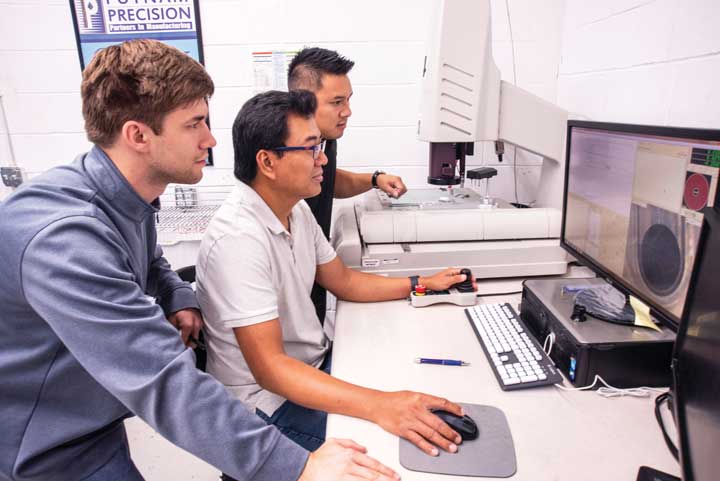
Putnam encourages collaboration and continued growth among our young engineers. Reviewing automated
vision inspection results for compliance are Konrad Poniatowski, Manufacturing Engineer, Phuc Son, Quality
Engineer, Hung Nguyen, Quality Assurance Manager.
HV Mfg: Talk to us about your leadership style.
SH: For me, leadership started at home—it is about being of service. Whether it was in my family, school, or community, as the oldest son of Irish immigrants, I felt a strong sense of responsibility, and I took that seriously. At Putnam, I learned that leadership is about sharing—sharing knowledge so others can learn and grow, sharing the glory and celebrating the small wins, and sharing ownership and accountability.
That is paramount here. We never lose sight of the fact that we are developing machinists who are working on medical devices that surgeons will use. Their work is touching patients and impacting their quality of life. That is pride of ownership, and that’s accountability.
Another key part is fostering open dialogue. I encourage everyone to speak up, no matter their position. We frequently confer on opportunities and challenges. We encourage exploring new ideas, dissecting them, taking them in, challenging the status quo. We have embraced this rigor at Putnam for years. We want to catch people doing something right, thank them for their good work, and build an environment where everyone feels accountable to one another.
I recognized the importance of building a strong workforce and spreading the word about manufacturing skills and job opportunities. … My workforce development commitment has come full circle as we have partnered with Brewster High School to establish an advanced PTEC manufacturing program.
HV Mfg: How do you think your leadership style has changed over the years?
SH: Oh, it has changed. When I was younger, I had more of a “lead, follow, or get out of the way” mentality. Now, I will bring a small group of the key stake holders to a process or a design, assuring all voices are heard. It also provides a meaningful forum to mentor the younger staff on how to fully vet an idea or respond to a new challenge or opportunity.
I have also become more focused on structured collaboration to be mindful of people’s time. Mentoring has become more deliberate, too—it is not just about passing on skills, but about connectivity. If I can help connect ideas or people, I go out of my way to do that. We encourage others to tackle the next challenge while opening the door for the next generation to step in. That approach frees people up to grow and take on new responsibilities.
Putnam’s strong commitment to training and showing a path to those entering the workforce is evident to our apprentices by seeing the strong track record of many of our longer-term employees continuing to matriculate rewarding careers within our organization.
HV Mfg: How has the Council of Industry helped your business?
SH: We continue to align ourselves with strong programs within our industry. The Council of Industry continues to be a significant partner in this industry. We have engaged through the council many shared experiences with fellow industries within the manufacturing sectors. This was particularly evident during Covid. Navigating, health, legal and supply chain challenges was invaluable during our weekly zoom’s. The Council has been fantastic at pulling us all together. The networking is extremely helpful. We continue to utilize the Council to facilitate trainings, keeping abreast of the latest laws, opportunities to contribute to the many workforce initiatives across the many schools, BOCES, STEM and college programs. Through the Council, we always feel connected and informed. We always look forward to the Council’s events—they provide real value.
HV Mfg: Your dedication to workforce development and community engagement is well-known. What inspired you to get involved in these efforts?
SH: As workforce development remains an urgent concern for our industry, we have recognized many years ago the need to contribute our support and expertise to this worthy cause.
We have aligned ourselves with strong programs within our industry. The Council of Industry continues to be a significant partner in this industry.
Early on in our relationship, Allendale’s Marty McGill introduced me to a number of organizations, which prompted me to become more engaged in the workforce development community. This connection opened doors to meeting incredible people at places like Hudson Valley Community College (HVCC) and RPI. I started mentoring students, working on projects with them, and watching them navigate challenges. I recognized the importance of building a strong workforce and spreading the word about manufacturing skills and job opportunities.
Recently, my workforce development commitment has come full circle as we have partnered with Brewster High School to establish an advanced PTEC manufacturing program. It is exciting to see the next generation getting hands-on experience in a field that has so much potential. By giving students the tools and knowledge they need, we are also building a brighter future for our industry and community.
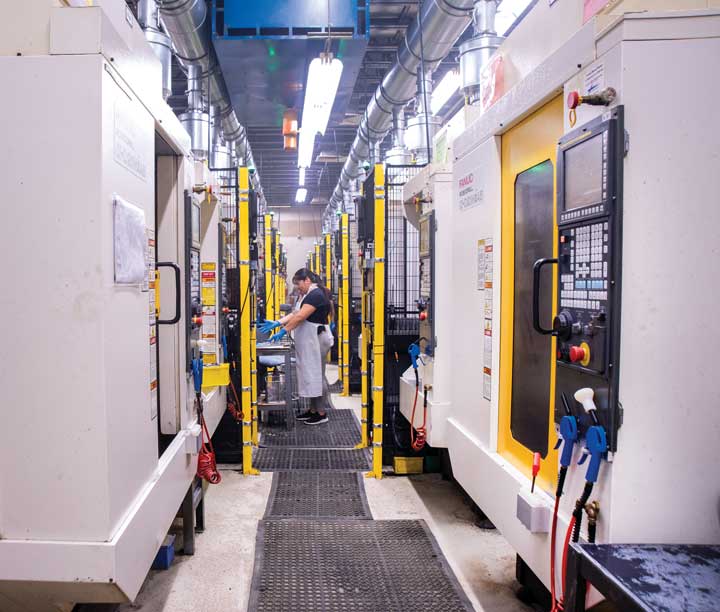
Maria Zhiminaicela is inspecting an automated CNC machining cell. Putnam continues to invest in latest technologies including over 30 robotic cells. These cells are continuously self-adjusting to facilitate tighter CpK’s and providing the ability to run lights out.
HV Mfg: What advice would you give to someone interested in a career in manufacturing?
SH: Focus on the incremental accumulation of skills. Leverage the opportunity in front of you. Welcome the opportunity to increase your skills and value to the team. Be present and open to new ideas. Seek to understand the skills and master the next level of craftsmanship. That’s how we all grew. It is how we learned our trade. As you build that trust and wealth of skills the next opportunities will be ready and waiting.
HV Mfg: What are some of the challenges you are facing right now?
SH: One of the main challenges is keeping up with the latest technology and driving innovation to our customers. We earn their business either by innovating or becoming more efficient behind the scenes. Workforce challenges are always present, but for over 30 years, we welcome the support the Council offers us in providing additional training through leading schools and programs throughout our region. Our team knows they have good jobs, and they are learning marketable skills. Sure, some people learn and move on, but we have had tremendous longevity—many of our employees have been with us for over 25 years, and some for more than forty.
Managing all the components of a modern workforce, from understanding different cultures and generational dynamics to ensuring compliance, can be tough. But at the end of the day, it is about providing opportunities for people in an environment where they can learn and grow. The opportunities always outweigh the challenges.
HV Mfg: What opportunities and trends do you see when you look ahead?
SH: We are in a strong position to support our customers. While some are in a new paradigm of inventory control, or others reshoring, we remain positioned to reconfigure our capabilities and capacities to match these challenges.
I am especially excited about the trend toward reshoring more manufacturing. The Hudson Valley is well-positioned to create value, and we are ready to be part of that resurgence. With our skilled workforce, proven quality, and performance history, we’re confident in our ability to stay competitive and drive innovation. As companies compete for the remaining onshore manufacturing capacity Putnam is well positioned to continuing serving the needs of our current and future customers.
On a personal note, I am looking forward to mentoring the next generation of employees and students and watching them excel. It is a privilege to work with a team that loves what they do and the innovation we continue to deliver
HV Mfg: Thank you for taking some time to speak with us today.
SH: Thank you for the opportunity.


